Since the birth of cars more than 130 years ago, as traditional cars continue to develop, the entire automotive industry and consumer market have reached some basic consensus on the main indicators for describing cars.
People are accustomed to classifying cars based on wheelbase and displacement, and evaluating vehicles based on comfort, driving performance, safety, etc. However, with the birth and development of electric vehicles, especially intelligent electric vehicles, the value system of automotive products is also changing. In 2021, how should we redefine intelligent vehicles and how should we evaluate them according to what standard system?
This is a really big question, which can be seen as a macro trend issue in the automotive industry, or as a sub-standard system issue for automotive product evaluation. Let’s take a step-by-step and detailed look at what standards an excellent intelligent vehicle product needs to meet, under the trend of intelligent cars.
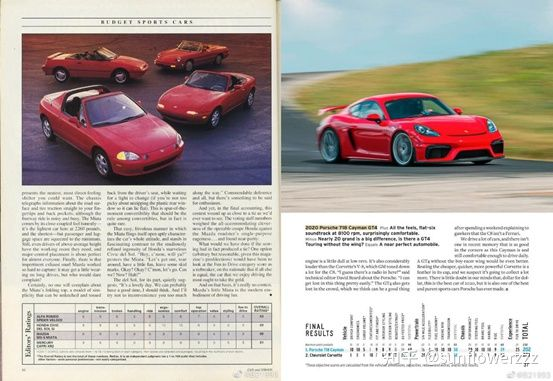
The character of automotive products is based on the manufacturer’s own product evaluation system
Many “car enthusiasts” who have read many cars often have a preconceived impression when evaluating automotive products, such as Japanese brands being fuel-efficient, German brands being exquisite, Italian brands being focused on driving, and British brands characterized by design. These impressions are not made out of thin air, but come from the evaluation system of these enterprises’ product development systems.
At the early stage of product development, an assumed form of “product performance target setting” is included in the initial assumptions of the project. Based on the manufacturer’s own “product evaluation system,” the performance targets of the product are set as whether it needs to lead in certain aspects among the same level, which aspects need to be only achieved on par with peers, and which aspects only need to maintain an average level of the industry.
Based on the product performance target setting, the project needs to allocate the budget and estimate the cost of the entire vehicle across various subsystems. As expected, more budget and cost will be spent on those obvious disadvantages that consumers are sensitive to and that are highly relevant to the brand, as well as on inherent advantages of the previous generation of products that need to be consolidated and compensated for compared to competing products. Therefore, the character of an automotive product is formed at the beginning of the project.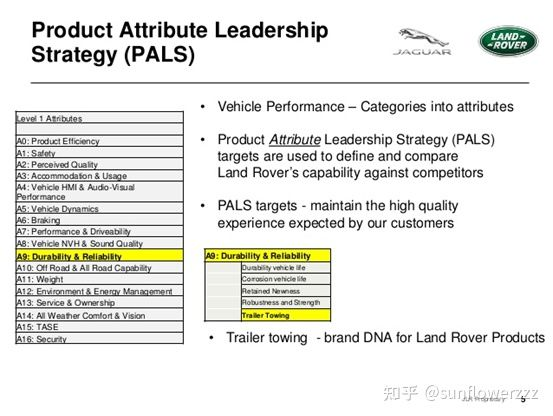
This product evaluation system and product performance target setting tool are almost ubiquitous in the mature automotive industry that has been around for over a century. Each traditional car manufacturer has its own system, either called PALS or feature catalog, with slight variations. However, despite the seeming differences, there are unchanging parts to these product evaluation indicators. They form a relatively closed-loop logic, where changes during product iteration or updating are only made based on estimated changes in competitors and expected improvement space for consumers. By meeting the evaluation system’s scoring requirements, everything will be fine for the industry, and the whole industry begins to improve like squeezing toothpaste.
When such a closed-loop logic and toothpaste-squeezing-like improvement encounter changeable times or a challenger entering the market, they will cause a situation where sailing against the current is the only way to advance; failing to advance means falling behind. Furthermore, if any new evaluation indicators emerge within the industry that have not been incorporated into the existing product evaluation system, products developed based on traditional systems will inevitably display a somewhat helpless state under the new evaluation indicators.
So why can’t the traditional product evaluation system and performance target setting tool in the automotive industry keep pace with the times and keep up with refinement during an era of changing consumer perceptions and the influx of new industry players?
The Vicious Cycle of Technological Limitations and the Inability to Improve the Evaluation System
Undeniably, as the basic qualities of the vehicle design, driving, comfort, and safety are still essential attributes for automobile products. However, after the mature development of intelligent driving and human-machine interaction technologies, they have also become an important part of what consumers perceive.
Suppose we assume that a new car model requires four years of development time. In that case, for most of the current car models on the market, the original product performance targets were already set before 2017. At that time, in some manufacturers’ product evaluation systems, intelligent driving was still considered an additional feature for active safety performance or even only as a secondary item, rather than a critical feature.
Apart from the product target setters not having enough foresight to emphasize the development of smart driving functions, back then, the auxiliary driving sensors could only form a separate auxiliary driving function, serving mainly as an active safety or driving convenience supplement. The technological constraints impeded the carmakers’ ability to create an integrated and user-friendly smart driving experience.
In addition, the discussion on in-vehicle interaction has been solidified for several years. Do you still remember the debate among Chinese car owners on forums years ago about whether knobs or touch screens with handwritten input were better? Even though both designs were frustrating to use, car owners were arguing on forums. The reason was simply that, at that time, touch screens with more direct and multi-touch controls were not yet perfect, while voice control, which could address blind operation needs, was still in the early stages of command-based mechanical dialogue, unable to provide a smooth and intelligent interactive experience inside the car.
Immature technology led to it not being recognized as a new dimension in the product evaluation system, and not being set as part of the product performance goals in the product evaluation system, which, in turn, led to R&D resources within the enterprise not being tilted towards these technologies, creating a somewhat tragic closed loop.
Moore’s Law for car-mounted intelligent driving and intelligent interaction hardware and the new standard for excellent intelligent automobiles
Today’s car hardware, like Moore’s Law, is dynamically and rapidly advancing, enabling intelligent driving and intelligent interaction experiences to be greatly improved, and significantly raising consumer expectations for these experiences in future car models. The product evaluation system of car manufacturers must take these experiences into consideration. In other words, in this era of major changes in the automotive industry, intelligent driving and intelligent interaction will become essential qualities for excellent products.
In recent years, intelligent driving-related hardware, such as camera resolution accuracy, image recognition algorithms, car-mounted chips, and even LIDAR, have improved at a rate comparable to Moore’s Law in the IT industry. Among the new products released in recent months, NIO’s flagship sedan ET7, two concept cars from IM Auto, and the new sedan from XPeng, are all expected to be equipped with LIDAR.
With the incorporation of LIDAR, the intelligent driving architecture can effectively compensate for the shortcomings of cameras and millimeter-wave radars, construct a more realistic 3D environment based on depth data obtained through actual detection, perform object recognition with more accurate object identification capabilities, and thus expand the intelligent driving experience to more scenarios regardless of objective conditions such as weather.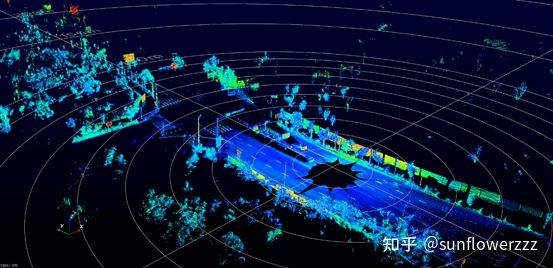
Unlike other brands that design LiDAR on the roof of the car, in the teaser image of the new car that XPeng (XPeng) is about to release, a design resembling LiDAR is vaguely revealed in the lower fog light area of traditional cars. Considering that the high-precision maps based on NGP (Navigation Guided Pilot) on current highways will be expanded to urban roads, and the high-precision maps of urban roads have not yet been approved for commercial use, urban NGP must rely on other hardware sensors to achieve functionality. This unique design position is likely born to expand this experience.
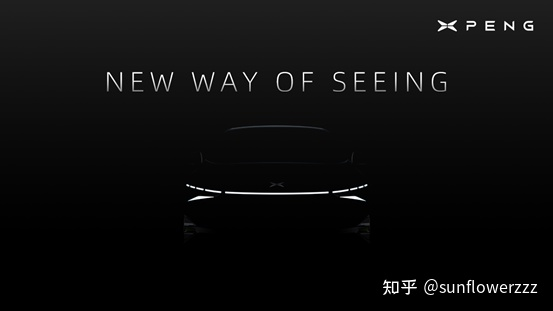
For intelligent interaction, the concept of speech recognition function that has already been equipped by many traditional car manufacturers is not new. From command-style interactions, pre-loaded instructions in the car system, to today’s AI semantic recognition of natural dialogs, and cloud recognition capabilities that are not afraid of dialects, voice recognition functionality now offers a more natural interactive experience. The addition of directional sound field and directional microphones also allows every seat in the cabin to communicate with the car without any obstacles.
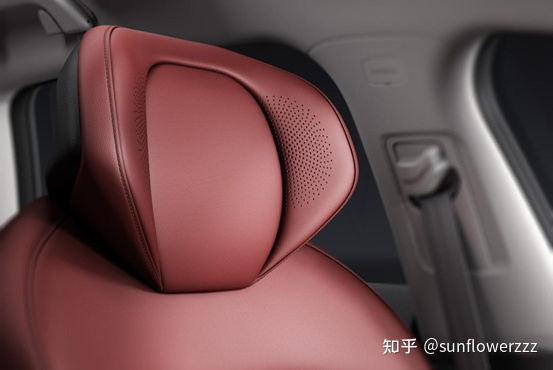
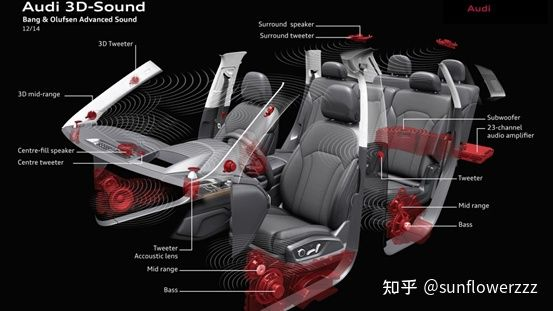
The large number of in-car speakers can be used to create a stereo sound field, and can provide more imagination space, such as providing 3D prompt sounds with stereo sound, and cooperating with auxiliary driving functions such as RCTW (Rear Cross Traffic Warning) rear cross intersection warning, etc. XPeng has already implemented full-scene voice interaction in P7, allowing even rear passengers to easily communicate with the front-seat car system, and share a seamless intelligent cabin experience.With the foundation of mature technology, a versatile intelligent driving system and an intelligent interaction system in the cockpit that allows each passenger to control the vehicle through natural conversation are new dimensions for product performance development that were previously non-existent in the evaluation system of automotive products.
As intelligent automobiles create a more comprehensive user experience, they will also bring more possibilities for usage scenarios and experiences, thus enhancing the potential of intelligent vehicles. With such potential, users will generate more new demands that need to be met, facilitating a positive cycle that further drives the development of these technologies.
Intelligent experience and organic evolution will become essential elements for determining whether a new era automotive product can be recognized as an outstanding product.
This article is a translation by ChatGPT of a Chinese report from 42HOW. If you have any questions about it, please email bd@42how.com.